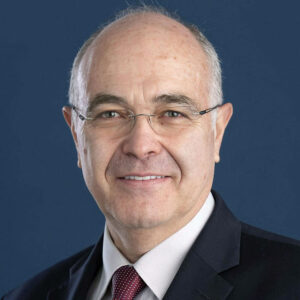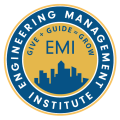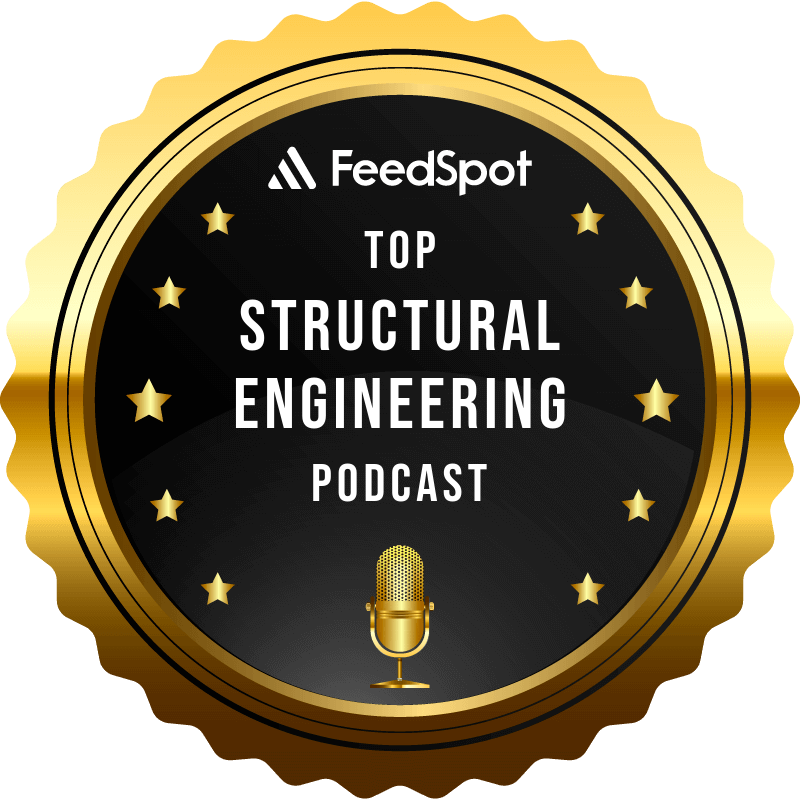In this episode, I talk with Carlos Banchik, P.E., CEO and Chairperson of the Board at Innova Technologies Inc., about tackling global monorail engineering challenges with creative solutions. We explore what it takes to design monorail systems that combine structural precision, complex geometry and multidisciplinary integration, including seismic retrofits and sustainable transit infrastructure. You’ll also hear how leadership development and ESOP ownership are transforming technical teams into purpose-driven innovators.
Here Are Some of the Questions We Ask Carlos Banchik, P.E.:
- What does it take to design a monorail that spans cities and handles extreme environmental demands?
- What unique structural engineering challenges arise in large-scale monorail infrastructure projects and how are they solved?
- How can technical excellence, construction safety, cost and sustainability be balanced in monorail design?
- What can be learned from working on seismic retrofit and alignment-focused engineering projects?
- How do engineers successfully manage international monorail projects across multiple codes, cultures and stakeholders?
- How do monorail systems support sustainable cities and reduce CO2 emissions?
- How are monorail guideway beams constructed and how does formwork align with tight structural tolerances?
- Why did you decide to move your firm toward employee ownership through an ESOP and how does it empower engineers?
- What advice helps engineers become leaders while maintaining their technical engineering edge?
- What final insight would you offer to engineers who want to make a meaningful impact on their communities and the world?
Here Are Some of the Key Points Discussed About Designing Monorail Systems to Solve Real Engineering Challenges
- Designing urban monorail systems demands precise structural alignment, tight construction tolerances and proactive collaboration between disciplines like power, mechanical and structural engineering. Every beam must integrate infrastructure needs while delivering mobility solutions built to withstand urban and environmental stressors.
- Monorail engineering challenges include geometric alignment, mechanical integration and sustaining 100-year service life with minimal deflection. These challenges are met by aligning civil, electrical and mechanical systems within strict millimeter tolerances for strength and safety.
- Delivering smart infrastructure requires early stakeholder engagement and a detailed understanding of every stakeholder’s requirements, from transit planners to construction teams. Success comes by weaving together different disciplines into one seamless solution tailored to performance and long-term serviceability.
- Working across disciplines in seismic retrofit and alignment-based projects teaches engineers how to listen, adapt and unify diverse solutions into constructible designs. These experiences build leadership insight, technical confidence and innovative thinking that leads to better structural outcomes.
- Managing international monorail projects starts by studying the host country’s regulatory framework, identifying local experts and combining global engineering standards with regional context. Multinational success depends on language fluency, cultural awareness and teamwork that bridges diverse skills and expectations.
- Compared to subways and traditional rail, monorail structures use up to 40% less concrete and 10% less steel while offering significantly faster construction speeds. Monorails deliver cost-effective, lower-emission transit options for high-density cities seeking sustainable infrastructure.
- Most monorail guideway beams are precast using advanced adjustable formwork systems capable of casting both straight and curved beams. Geometry and finish are fine-tuned through modeling, superelevation adjustments and tight fabrication quality control.
- Transitioning to an ESOP empowers team members by giving them ownership in the company’s success while supporting leadership development from within. This structure creates long-term stability, attracts innovative talent and allows engineers to refine their leadership potential.
- Engineers can grow into leadership roles without losing technical skills by focusing on constructability, performance and understanding how solutions are built and maintained. Their technical instincts remain sharp by evaluating execution, functionality and safety across every phase of a project.
- Engineers who bring purpose, insight and collaboration to their teams become invaluable contributors in shaping the built environment. They are reminded to remain relevant, trust their expertise and align their passion with the positive impact they want to create.
More Details in This Episode…
About the Guest:
Carlos Banchik, P.E.

In 2003 he founded Innova Technologies with his wife, Adriana, also a structural engineer. At Innova, Mr. Banchik participated in tens of monorail proposals, leading to participation on the São Paulo Monorail-Line 15; King Abdullah Financial District Monorail, the 66 km Yellow and Pink Line monorails in Bangkok, and 100 km Cairo Monorails projects, Santiago de los Caballeros in Dominican Republic and Monterrey Lines 4 & 6. Through Innova, Mr. Banchik also is involved in the Waikoloa Tram retrofit and the Kahului Airport Tram project. A sister company, Innova Transportation, was formed in 2017 to focus on monorails, people movers, and other specialty transportation projects. More recently, Innova started offering geometric and alignment as-builts for monorail guideways based on a state-of-the-art self-propelled device designed and constructed by Innova.
Innova has started a transition in ownership and leadership embracing the vehicle of the ESOP and training all our leaders and emerging leaders to Project Management courses and executive peer groups.
Mr. Banchik, whose company has been a member of the International Monorail Association since 2011, was elected President of the IMA meeting in 2012. As a member of the Executive Council, he presided over the organization until September 2021. Mr. Banchik considers efficient and slender Monorails structures as an effective means to provide mass transportation in an era of growing concern about Climate Change and CO2 emissions.
Mr. & Ms. Banchik are the proud parents of three grown children and two lovely grandchildren.
Innova is a multidisciplinary firm with a strong emphasis on structural design and construction support. Monorail and automated people mover APM transportation projects have represented a substantial amount of work since Innova started. Based in Las Vegas, Nevada, Innova’s employees have wide-ranging structural and civil experience in many countries around the world. Monorail projects are not like ordinary transportation projects and require special knowledge and expertise to design and produce a quality product. Innova’s engineers have been involved in monorail design and construction since 1994.
About the Host
Mathew Picardal, P.E., SE

Sources/References:
Innova Technologies
PSMJ
UC Berkeley
UC San Diego
Cal Poly Pomona
International Monorail Association
VSL Corporation
Jacobs
AASHTO
ASCE 21
Michelin
Connect with Carlos Banchik, P.E., on LinkedIn
AEC PM Certification
AEC PM Connect
Project Management Accelerator™
Engineering Leadership Accelerator™
Please leave your comments or questions in the section below:




























